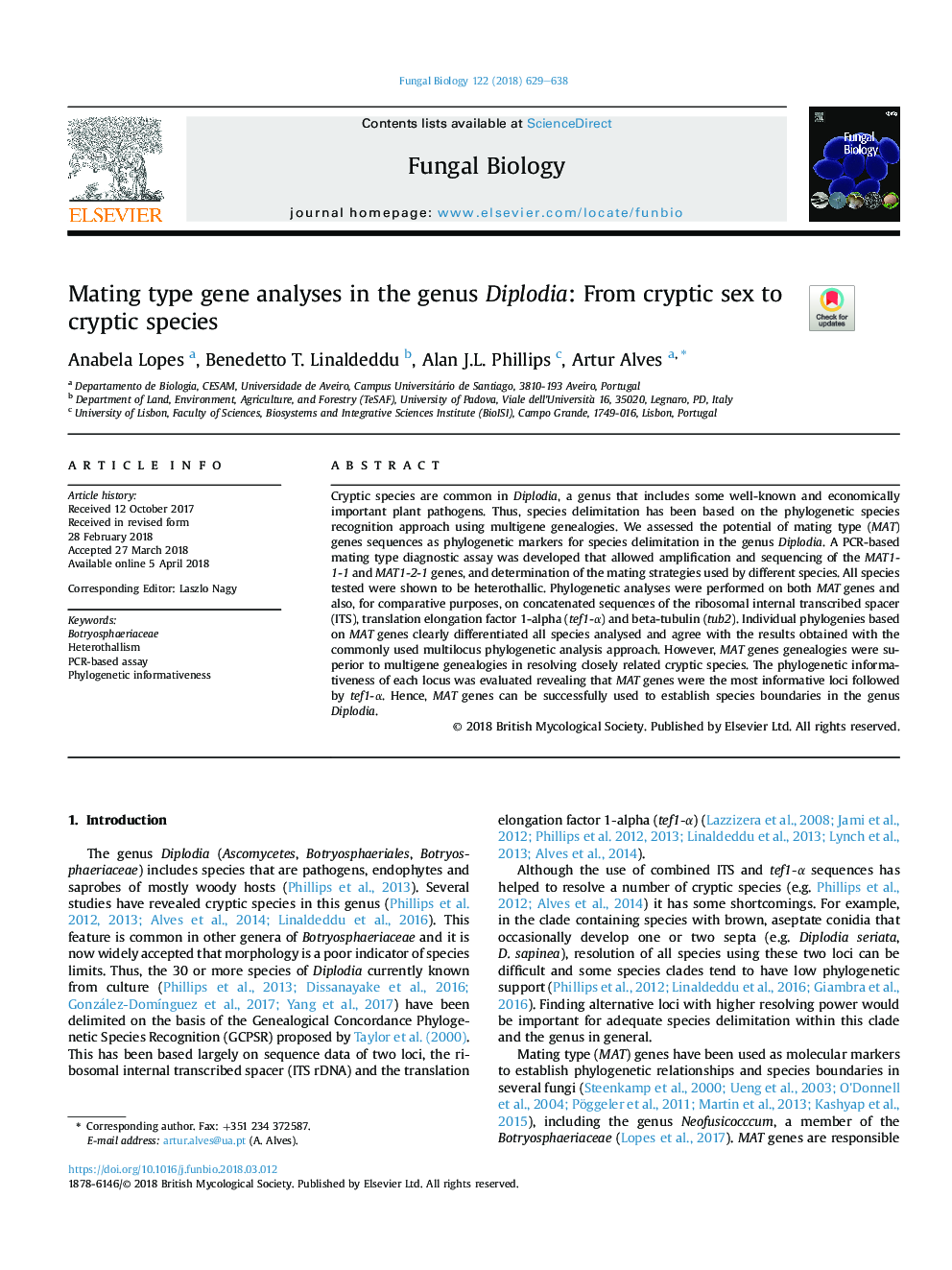| Article ID | Journal | Published Year | Pages | File Type |
|---|---|---|---|---|
| 8842722 | Fungal Biology | 2018 | 10 Pages |
Abstract
Cryptic species are common in Diplodia, a genus that includes some well-known and economically important plant pathogens. Thus, species delimitation has been based on the phylogenetic species recognition approach using multigene genealogies. We assessed the potential of mating type (MAT) genes sequences as phylogenetic markers for species delimitation in the genus Diplodia. A PCR-based mating type diagnostic assay was developed that allowed amplification and sequencing of the MAT1-1-1 and MAT1-2-1 genes, and determination of the mating strategies used by different species. All species tested were shown to be heterothallic. Phylogenetic analyses were performed on both MAT genes and also, for comparative purposes, on concatenated sequences of the ribosomal internal transcribed spacer (ITS), translation elongation factor 1-alpha (tef1-α) and beta-tubulin (tub2). Individual phylogenies based on MAT genes clearly differentiated all species analysed and agree with the results obtained with the commonly used multilocus phylogenetic analysis approach. However, MAT genes genealogies were superior to multigene genealogies in resolving closely related cryptic species. The phylogenetic informativeness of each locus was evaluated revealing that MAT genes were the most informative loci followed by tef1-α. Hence, MAT genes can be successfully used to establish species boundaries in the genus Diplodia.
Related Topics
Life Sciences
Agricultural and Biological Sciences
Agricultural and Biological Sciences (General)
Authors
Anabela Lopes, Benedetto T. Linaldeddu, Alan J.L. Phillips, Artur Alves,
